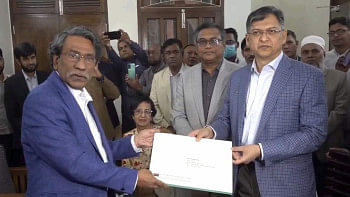The historic movement to save Sundarbans

For the first time in history, Bangladesh is experiencing a mass movement to save a forest – the largest mangrove in the world. The government of Bangladesh and India are going to build a 1320 MW coal fired power plant in Rampal, besides Passur river, just 14 km away from the Sundarbans. There is no recent example in the world of a state establishing a coal-fired power plant so close to such a biodiversity enriched forest. Local and foreign researchers, scientists and experts, including Indian independent experts, have all warned that the proposed Rampal power plant would have a disastrous impact on the Sundarbans in the long run. Even UNESCO has urged the government to stop the project. But the government has consistently refused to pay heed to these concerns.
In response to questions from the public and world community, the government is trying to feed us the story of that they would be using what they are called the “most modern technology”, without actually every clarifying what this is or how it would magically rid the Sundarbans of any possible pollution. In fact, the “Ultra Super Critical Technology” that the government is bragging of, reduces only 5 to 10 percent of the emissions. While the most advanced countries of the first world, including China, are shutting down their coal power plants one by one, and while the Indian government does not allow the establishment of a coal power plant within 25 km of a forest because of the pollution it will cause, how can the Bangladesh government guarantee that the Rampal power plant will not affect the Sundarbans? Do they know a magic formula that the rest of the world is unaware of?
Failing to counter these scientific facts, the government is now repeatedly urging us to trust them, saying that they will protect the Sundarbans. But when the government fails to protect even the Buriganga river - which is just a few kilometers away from the Secretariat - from pollution and grabbing; when it is completely unsuccessful in managing the oil spill incidents in Sundarbans, how, really, can people trust its promises?

The movement against the Rampal power plant is now in its seventh year. Though the National Committee to Protect Oil Gas Mineral Resources Power and Ports has been leading the movement from the beginning, it has now turned into a mass movement, driven by the people. In the past seven years, the movement has incorporated different means of protest: from long marches and human chains to more innovative approaches of cycle processions, exhibitions and the use of Facebook profile picture changing apps. More than 20 songs and a number of artwork and documentaries have been created so far on this single issue– an unprecedented feat in Bangladesh in recent decades. For the first time in Bangladesh's history, a general strike was called in Dhaka to save a forest!
In continuation of this, the National Committee called a mass gathering of coastal people in the Shaheed Hadis Park of Khulna City on the last April 20, 2017. Thousands of people of all ages, from the coastal districts adjacent to Sundarbans, gathered there ignoring the rain – singing, dancing and shouting slogans.
When a group of us protestors went out prior to the programme to distribute leaflets on the streets of Khulna city, the general people voiced similar concerns to ours. The shopkeepers, hawkers, tea stall owners, pedestrians – all shared their discontent against the Rampal power plant and their frustration at the government's actions. Some pointed out that the local powerful groups were threatening them to remain silent.
During the protest, a 70-year-old protester, Mihir Sarkar, died of a stroke while marching in the procession leading to the event. What made this 70-year-old man come to the procession, ignoring his health, to save the Sundarbans? The answer lies in the importance of the Sundarbans to Bangladesh – 5 million people depend on it for their lives and livelihoods, and it acts as a natural protector of 50 million people of the coastal belt from cyclones like Sidr and Aila. Though multiple surveys have revealed that more than 90 percent people of Bangladesh are against the Rampal plant, we do not find them on our side when we are out on the streets; they remain silent despite their reservations. But will remaining silent save them when future generations question them about the role they played in destroying the Sundarbans?
Mahtab Uddin Ahmed is an activist and researcher.


 For all latest news, follow The Daily Star's Google News channel.
For all latest news, follow The Daily Star's Google News channel. 



Comments